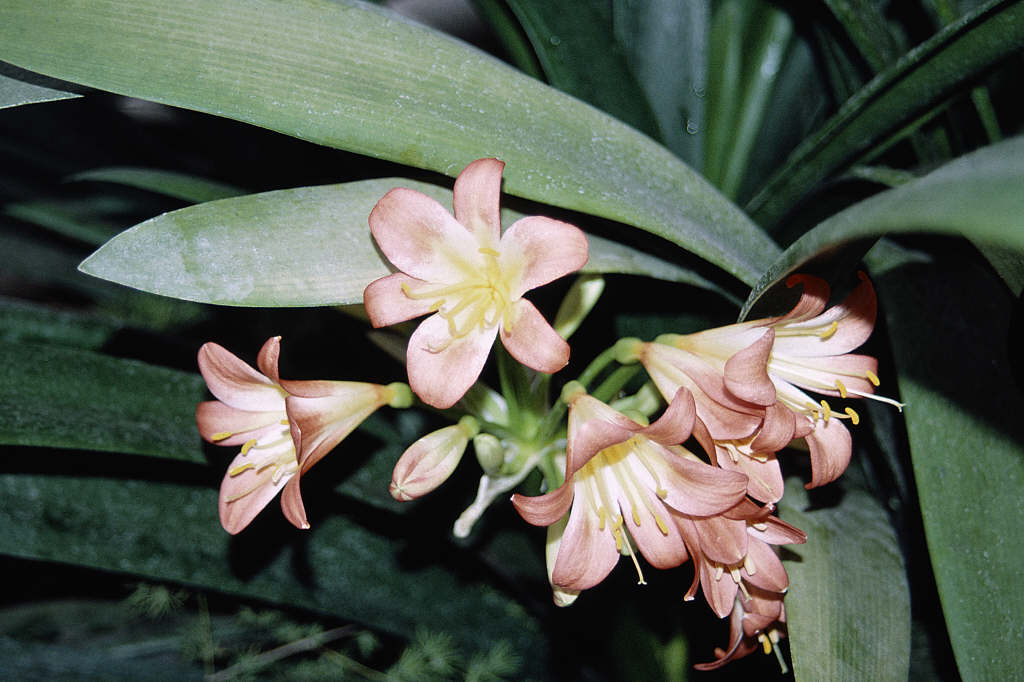Size
Ultimate height
0.1–0.5 metresTime to ultimate height
2–5 yearsUltimate spread
0.1–0.5 metresGrowing conditions
Moisture
Well–drainedpH
Acid, Alkaline, NeutralColour & scent
| Stem | Flower | Foliage | Fruit | |
| Spring | Orange Yellow | Green | ||
|---|---|---|---|---|
| Summer | Orange Yellow | Green | ||
| Autumn | Green | Red | ||
| Winter | Green |
Position
- Full sun
- Partial shade
Aspect
North–facing or West–facing or East–facing
Exposure
Sheltered Hardiness
H1CBotanical details
- Family
- Amaryllidaceae
- Native to GB / Ireland
- No
- Foliage
- Evergreen
- Habit
- Clump forming
- Potentially harmful
- All parts may cause a stomach upset if ingested, sap may irritate skin. Wear gloves and other protective equipment when handling
- Genus
Clivia are evergreen perennials, the strap-shaped leaves sheathing to form a swollen bulb-like base. Showy trumpet-shaped or tubular flowers are borne in an umbel on a stout erect stem
- Name status
Correct
- Plant range
- S Africa (Natal)
How to grow
Cultivation
Under glass grow in peat-free, loam-based potting compost with added leaf mould and grit, in bright filtered light with shade from hot sun. Water freely in summer and keep barely moist in winter. Apply a balanced liquid fertiliser weekly when in growth up to flower bud formation. Do not repot regularly as these plants resent root disturbance and need a restricted root run to encourage flowering
Propagation
Propagate by seed at 16-21°C as soon as ripe or by division in late winter or early spring
Suggested planting locations and garden types
- Patio and container plants
Pruning
No pruning required
Pests
May be susceptible to mealybugs
Diseases
Generally disease-free
Love gardening
Sign up to receive regular gardening tips, inspiration, offers and more
View our Privacy Policy
Get involved
The Royal Horticultural Society is the UK’s leading gardening charity. We aim to enrich everyone’s life through plants, and make the UK a greener and more beautiful place.
